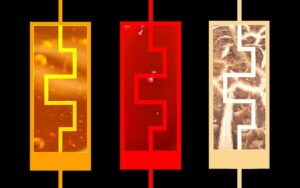
NASA scientists are closely monitoring asteroid YR4, which has a **4% chance** of colliding with the moon in **2032**. While the potential impact may sound alarming, experts have largely discounted the risk of a catastrophic collision with Earth, often referred to as a “city killer.” The ongoing research focuses on methods to alter YR4’s trajectory, including the consideration of **nuclear options**.
Recent studies, involving contributions from NASA researchers, suggest that a nuclear explosion could be utilized to change the asteroid’s path or even destroy it if necessary. The asteroid, if it were to impact Earth, could cause significant damage, but current assessments indicate that its trajectory poses no direct threat to our planet.
Cristina Thomas, an associate professor of Astronomy and Planetary Science at **Northern Arizona University** and a member of NASA’s **Double Asteroid Redirection Test** (DART) team, emphasized the importance of tracking celestial objects like YR4. “It is our responsibility to keep track of these objects and to understand what’s going to happen,” she stated.
Thomas noted that prior experiences, such as the successful alteration of an asteroid’s trajectory during the DART mission, have equipped scientists with valuable insights. She explained, “If you know about something far enough in advance, so years, potentially even decades, you just need to give it a very small nudge, relatively speaking, to make a really big change over a period of time.” This approach could ensure that any potential impact could be avoided entirely.
While a collision with the moon might not have dire consequences for Earth, there are concerns regarding satellites and the **International Space Station** (ISS). Thomas highlighted that monitoring and predicting the asteroid’s path remain essential for safeguarding these vital assets. In fact, an impact on the moon could result in a spectacular meteor shower, captivating observers on Earth.
Currently, YR4 is not visible, but astronomers expect it to become observable again in **February 2024** with the help of the **James Webb Telescope**. These observations will provide critical data that could either increase or decrease the probability of a lunar impact, allowing scientists to refine their strategies for response.
As the world watches this situation unfold, understanding the potential implications of YR4 is crucial. Through rigorous observation and innovative strategies, NASA and its collaborators aim to ensure the safety of both the moon and Earth’s orbiting satellites.







